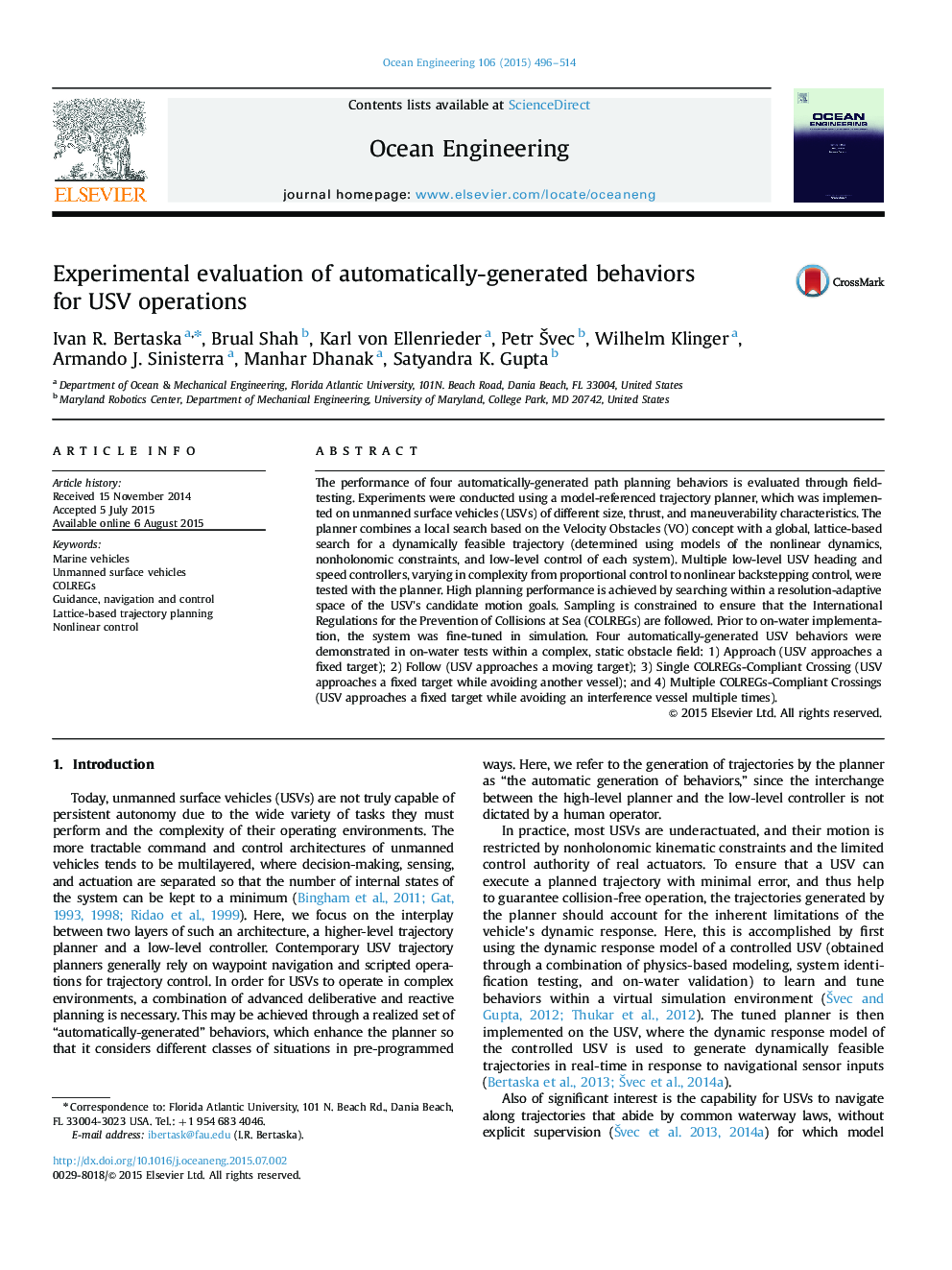| Article ID | Journal | Published Year | Pages | File Type |
|---|---|---|---|---|
| 1725281 | Ocean Engineering | 2015 | 19 Pages |
Abstract
The performance of four automatically-generated path planning behaviors is evaluated through field-testing. Experiments were conducted using a model-referenced trajectory planner, which was implemented on unmanned surface vehicles (USVs) of different size, thrust, and maneuverability characteristics. The planner combines a local search based on the Velocity Obstacles (VO) concept with a global, lattice-based search for a dynamically feasible trajectory (determined using models of the nonlinear dynamics, nonholonomic constraints, and low-level control of each system). Multiple low-level USV heading and speed controllers, varying in complexity from proportional control to nonlinear backstepping control, were tested with the planner. High planning performance is achieved by searching within a resolution-adaptive space of the USV׳s candidate motion goals. Sampling is constrained to ensure that the International Regulations for the Prevention of Collisions at Sea (COLREGs) are followed. Prior to on-water implementation, the system was fine-tuned in simulation. Four automatically-generated USV behaviors were demonstrated in on-water tests within a complex, static obstacle field: 1) Approach (USV approaches a fixed target); 2) Follow (USV approaches a moving target); 3) Single COLREGs-Compliant Crossing (USV approaches a fixed target while avoiding another vessel); and 4) Multiple COLREGs-Compliant Crossings (USV approaches a fixed target while avoiding an interference vessel multiple times).
Keywords
Related Topics
Physical Sciences and Engineering
Engineering
Ocean Engineering
Authors
Ivan R. Bertaska, Brual Shah, Karl von Ellenrieder, Petr Å vec, Wilhelm Klinger, Armando J. Sinisterra, Manhar Dhanak, Satyandra K. Gupta,
